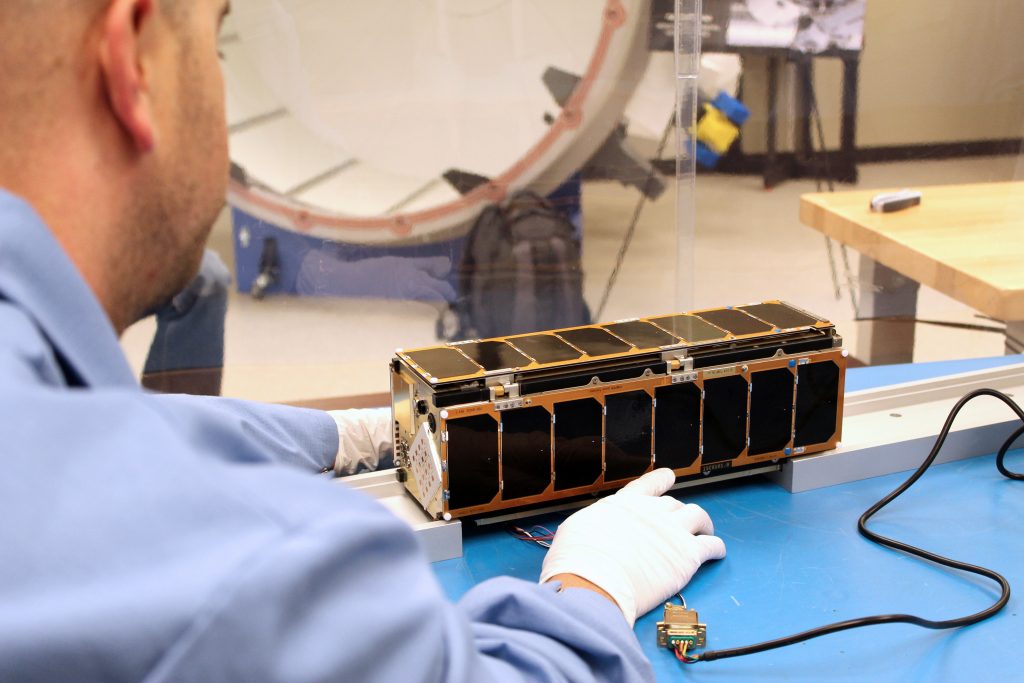
A NASA cubesat
If the Space Force wants to have a maximum impact in its second year, it needs to get acquisition right — right now.
Acquisition is, sadly, nowhere near as exciting as the accoutrements or trappings of the service, but it will have a greater long-term impact on the Space Guardians than whatever camo uniform they adopt.
Getting acquisition right speaks to the culture of the service. There’s a unique chance here as this is the first time in nearly 70 years where the Defense Department can craft a wholly new service with new pathways to buy and field equipment. At its core this means building a culture of risk acceptance and tolerance — not avoidance. It means being willing to try new things and field new architectures without a guarantee that they will work and, if they fail, learning and improving. It means encouraging innovation and adaptation from the ground-up, not forcing consensus from the top down.

Joshua Huminski
This also means partnering with the commercial sector in novel ways. Rather than merely define the requirements from bolts to solar panels, the Space Force can and should define its missions and capabilities, and allow the commercial sector to design and develop creative solutions for them. This capabilities-driven acquisition will encourage competition and innovation, and lead to unexpected outcomes.
What does the next generation of Position, Navigation and Timing (PNT) look like? How about next-generation missile warning? What capabilities are on the digital drawing boards in Silicon Valley and elsewhere to help maintain America’s edge in space that the Pentagon simply doesn’t know about? Real acquisition reform is not about shaving a month or two off of a five- or 10-year acquisition, it is about building an ecosystem of innovation and experimentation.
Getting these concepts from the drawing board to orbit means creating new pathways and on-ramps from concept to experiment to program of record. Too often novel ideas are seeded, encouraged and tested, but die in acquisition’s valley of death. This need not be the case—with the cost of launch coming down and the cost of cube and small satellites becoming increasingly cheap, the opportunities for experimentation should be increasing. This requires over-the-horizon thinking and a willingness to break the existing models and modes of operation. The Space Force needs to match the speed of acquisition with the private sector’s speed of innovation.
Here, this means closing the kill chain in and from space. The Space Force is thinking like and operating as a part of the joint fight, not merely the orbital arm of the Department of Defense. But more than just jointness, this means looking at the acquisition of space capabilities as part of a system of systems, with the ultimate goal of delivering an effect on-the-ground or denying the adversary the ability to act on orbit or on-the-ground.
Congress and the public needs to know more and better understand the Space Force’s mission. The service’s creation and roll-out experienced some growing pains and was affected by the politics of association with President Trump, but there is a huge opportunity to educate America on why space matters to them on a daily basis. New members of Congress need to know how space affects their constituents.
The Space Force also needs to take an aggressive role (in terms of involvement, not necessarily posture) in helping to shape the rules of the road on orbit. Working with the Departments of Commerce, and Transportation, the Space Force needs to help shape the domestic ecosystem of space activity in terms of space situational awareness and space traffic management, launch licensing, and other space activities. It also needs to work with the Department of State and our international partners and allies to create norms of behavior in space (to include beyond near-earth orbit).
The Space Force can fundamentally reshape America’s posture on orbit and ensure our country’s national security and economic future in space. It is vital that the momentum that led to the service’s creation not be lost, and the excitement around the Space Force not be allowed to atrophy.
Joshua Huminski is director of the national security space program and director of the Mike Rogers Center for Intelligence and Global Affairs at the Center for the Study of the Presidency and Congress in Washington. He can be found on Twitter @joshuachuminski.
L3Harris selloffs hampered by low bids, CEO says
“To the extent we can get a good price for what we’ve identified as non-core [businesses], we’ll do it. But too many of the offers are coming in low and people think we’re desperate to sell, and I can assure you we’re not,” said L3Harris CEO Chris Kubasik.



























